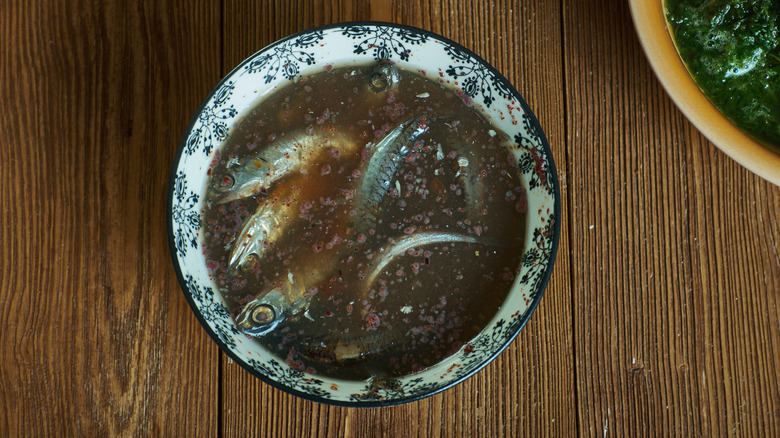What Kind Of Fish Is Used To Make Fish Sauce?
Lots of the finest ingredients from the best culinary traditions have some fairly complex and storied histories. Take fish sauce for example. It's sneakingly sweet, boldly salty, intensely fishy, and uniquely funky. At a glance, it just seems to be another amber-colored liquid in a bottle, but try to make a Pad Thai without it, and you'll be sorely disappointed.
According to Bon Appétit, lots of different cultures have used fermented fish sauces, notably Greek and Chinese cuisines, but fish sauce today is typically most commonly associated with South Asian cuisine, and for good reason. Vietnamese and Thai foods are particularly skillful at utilizing the particularly potent strength of umami from fish sauces while still leveraging the caramel sweetness. Fish sauce can be made from all different kinds of fish. In fact, there are tons of different specific flavor profiles and aromas from different recipes that are all worth checking out, but there are some that are more popular than others.
Out of the water and into the salt
In order to make fish sauce, fish, preferably with high oil contents, are first caught and then coated in salts to enhance their flavors. Once suitably covered they are all placed with some water in a large barrel and allowed to ferment anywhere between several months to several years, per The Spruce Eats. Sometimes extra ingredients, such as sugars are added, but it's not necessary.
Once fish are settled in a barrel, the liquid that is pressed from these barrels is fish sauce. Although it's not always just fish in the barrels, shrimp and krill are also commonly used, along with Mackerel for their intense fishy flavors. But the most popularly used fish due to its ease of access, its high-fat content, and funky flavors is by far the anchovy. They're smaller and ferment quickly and deliciously, and are usually what you'll read on a bottle of fish sauce.

